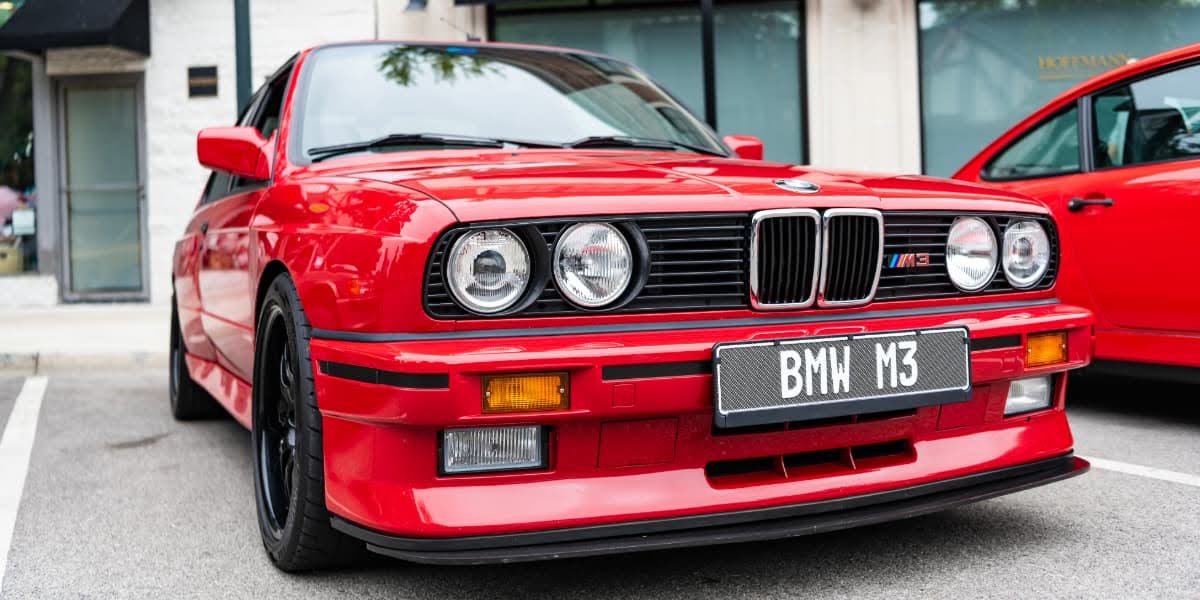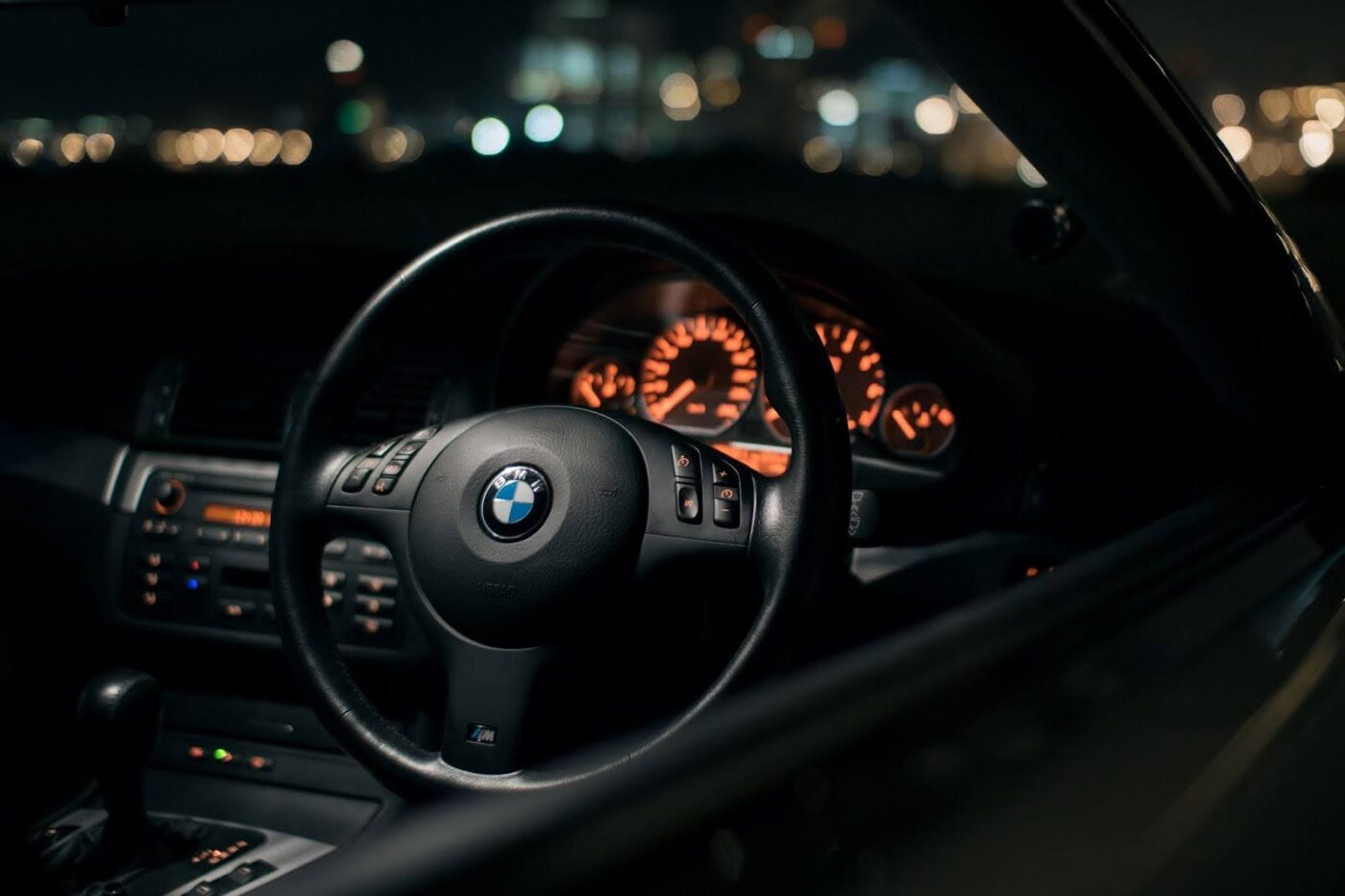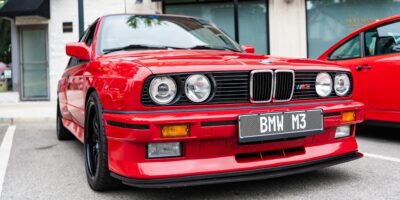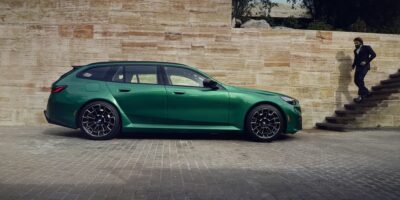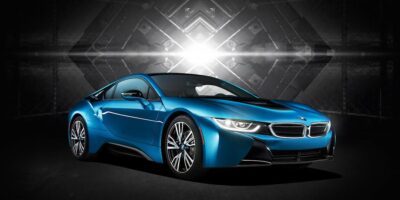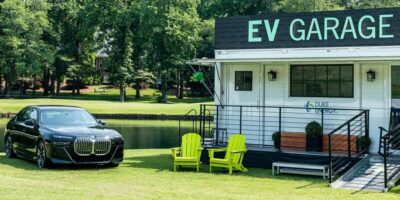If you’re thinking about buying a classic BMW 3 Series, you’ve probably come across two awesome options: the BMW E30 from the 1980s and the BMW E36 from the 1990s. Both cars are legends in their own right, but which one should you actually buy in 2025?
The BMW E30 is the car that made BMW famous for being the “Ultimate Driving Machine.” It’s the one with the boxy shape and four round headlights that everyone thinks of when they picture a classic BMW. The BMW E36 came next and brought more power, better comfort, and modern features while keeping that special BMW driving feel.
Here’s the thing though – both cars are getting more expensive and harder to find in good condition. So if you’re trying to decide between them, you need to know what you’re getting into. Let’s break down everything you need to know about these two classic BMWs.
How Fast Are They Really?
Let’s be honest – neither of these cars will blow your mind with raw speed compared to what you can buy today. But that’s not really the point. These cars are about the driving experience, not just going fast in a straight line.
The E30: Pure Driving Fun
The BMW E30 was built when BMW cared more about how a car felt than how many cup holders it had. The most popular model, the 325i, made 168 horsepower from a sweet-sounding 2.5-liter engine. That might not sound like much, but remember – this car only weighs about 2,600 pounds. That’s almost 1,000 pounds lighter than most cars today!
The famous E30 M3 was even more special. It had a high-revving four-cylinder engine that made 192 horsepower and could hit 60 mph in about 6.5 seconds. More importantly, it won over 1,500 races around the world, proving these cars could really handle.
What makes the E30 special is how it talks to you. The steering wheel tells you exactly what the front wheels are doing. The car leans into corners just enough to let you know you’re having fun, but not so much that you get scared. It’s like driving a go-kart that grew up.
The E36: More Power, More Comfort
When the BMW E36 showed up in the early ’90s, BMW decided to give people what they wanted – more power. The 325i jumped up to 189 horsepower, and the top-of-the-line 328i made even more. The E36 M3 was a real beast with up to 240 horsepower (depending on which year you get) and could hit 60 mph in about 5.5 seconds.
The trade-off? The E36 weighs about 3,100 pounds – that’s 500 pounds heavier than the E30. You can feel that extra weight, especially when you’re trying to toss the car around corners. But BMW’s engineers were smart. They gave the E36 better suspension that made it more predictable and easier to drive fast.
Think of it this way: the E30 is like a motorcycle with four wheels – raw, direct, and exciting. The E36 is like a really good sports car – still fun, but more civilized and comfortable.
What This Means for You in 2025
Neither car will embarrass a modern Honda Civic in a drag race, but who cares? These cars are about something different. They connect you to the road in a way that modern cars just can’t. No electronic nannies, no computer telling you what to do – just you, the car, and the road.
Which One Looks Better?
This is totally personal, but both cars have their own style that people love.
E30: The Classic Look
The BMW E30 looks like what most people think a BMW should look like. Those four round headlights, the boxy shape, the simple lines – it’s just right. Even today, when you see one on the road, it stands out. It looks purposeful, like it was built to do a job, not just look pretty.
Inside, everything is simple and straightforward. You get basic controls, manual everything (windows, locks, mirrors), and seats that are comfortable enough for long drives. No fancy stuff, just what you need to drive.
E36: The Modern Classic
The BMW E36 looks more like cars from the ’90s – smoother, more rounded, with better integrated bumpers. It’s not as instantly recognizable as the E30, but it has its own appeal. Some people think it looks more sophisticated.
Inside, you get power windows, power locks, better air conditioning, and generally more comfort features. The cabin feels bigger and quieter too. If you’re planning to drive the car every day, you’ll probably appreciate these upgrades.
The Verdict
The E30 has that timeless, iconic look that never gets old. The E36 looks good too, but in a more understated way. If you want people to know you’re driving something special, the E30 wins. If you want to blend in while still having fun, the E36 might be better.
What About Reliability and Maintenance?
This is probably the most important section for anyone thinking about buying one of these cars. Let’s be completely honest here – both the BMW E30 and BMW E36 are old cars now. Even the newest E36 rolled off the production line over 25 years ago. They’re going to need work, and you need to know what you’re getting into.
E30: The Simple but Demanding Classic
The BMW E30 is like that friend who’s super reliable once you get to know their quirks, but they definitely have quirks. Here’s the real deal on E30 ownership:
What Makes E30s Great to Own:
- Simple mechanical systems that are easy to understand
- Tons of online resources and helpful communities
- Most problems are straightforward to diagnose
- Parts are still available (though getting more expensive)
- You can fix most things with basic tools in your driveway
Common E30 Problems You Will Face:
- Fuel pump failures: Happens to almost every E30 eventually ($200-400 to fix)
- Cooling system leaks: Radiators, hoses, and water pumps age out ($300-800)
- Electrical gremlins: Old wiring causes weird issues ($100-500 per problem)
- Rust issues: The big killer – check wheel wells, battery area, and structural points
- Timing belt service: Must be done every 60,000 miles or you’ll destroy the engine ($400-600)
The E30 Maintenance Reality: Plan on spending about $150-200 per month on average for maintenance and repairs. Some months you’ll spend nothing, other months you might drop $1,000 on something unexpected. That’s just how old cars work.
Rust: The E30’s Biggest Enemy This is serious – rust will kill an E30 faster than anything else. Here’s where to look:
- Rear wheel wells (very common)
- Battery tray area (check under the battery)
- Rocker panels and door frames
- Rear shock towers
- Around the windshield
If you find significant rust in any of these areas, walk away unless you’re getting the car really cheap and know what you’re doing.
DIY Friendly Rating: 9/10 The E30 is one of the best cars ever made for learning to work on cars. Everything is accessible, the repair procedures make sense, and there are endless YouTube videos showing you how to fix everything.
E36: More Complex but More Civilized
The BMW E36 brought more features and comfort, but that also means more things that can break. However, for daily driving, it’s generally more reliable than the E30.
What Makes E36s Good to Own:
- More reliable electrical systems than E30
- Better climate control that actually works
- Stronger engines when properly maintained
- More comfortable for longer drives
- Still relatively simple compared to modern cars
The Big E36 Problems You Need to Know:
- Cooling system failure: This will destroy your engine if ignored
- Rear subframe cracking: Expensive repair that affects many E36s
- Window regulators: Power windows break frequently ($200-400 each)
- Door handle cables: They break and trap you inside/outside ($50-150)
- HVAC system issues: Blend doors and heater cores fail ($500-1,500)
The Cooling System Deep Dive: This is the big one with E36s. BMW used a lot of plastic parts in the cooling system, and they fail predictably:
Parts that will need replacement:
- Radiator (plastic tanks crack): $200-400
- Water pump (plastic impeller): $150-300
- Thermostat housing (plastic cracks): $50-150
- Expansion tank (plastic gets brittle): $100-200
- All the hoses (rubber gets soft): $200-400
The good news: If you replace all this stuff preventively, your E36 will be very reliable. The bad news: it costs about $1,000-1,500 to do it all at once.
Subframe Issues Explained: The rear subframe on E36s can crack where it mounts to the car. This happens because:
- Bushings wear out and allow movement
- The subframe starts flexing and cracking
- Eventually, it can tear right out of the car
Warning signs:
- Clunking noises from the rear
- Car feels loose or unstable
- Visible cracks around subframe mounting points
Cost to fix: $2,000-4,000 depending on how bad it is.
DIY Friendly Rating: 7/10 E36s are still pretty good for DIY work, but they’re more complex than E30s. You’ll need more specialized tools and the procedures are more involved.
Real-World Ownership Costs in 2025
Let’s talk actual numbers based on what owners are spending right now:
Annual Maintenance Budget:
- E30: $1,500-2,500 per year
- E36: $1,200-2,200 per year
Breakdown by category:
- Regular maintenance (oil, filters, fluids): $300-500
- Preventive repairs (cooling, suspension): $500-1,000
- Unexpected repairs: $400-1,000
- Performance/cosmetic upgrades: $300-800
First Year Ownership Costs: When you first buy either car, plan on spending extra to get it sorted:
- E30: $2,000-4,000 in the first year
- E36: $1,500-3,000 in the first year
Which is More Reliable for Daily Driving?
For daily use in 2025: The BMW E36 wins this hands down. Here’s why:
E36 Advantages:
- Air conditioning that actually works
- More predictable electrical systems
- Better cold weather starting
- More comfortable seats for long drives
- Working heat and defrost systems
E30 Challenges for Daily Use:
- Climate control systems often don’t work well
- Can be finicky in cold weather
- Less comfortable for commuting
- More likely to leave you stranded
Reliability by Model Within Each Generation
Most Reliable E30 Models:
- 325i (1987-1991): The sweet spot for reliability and performance
- 318is (1991-1992): Simple four-cylinder, very reliable
- 325e (1984-1987): Super efficient engine, very durable
E30 Models to Avoid:
- 1984-1985 318i: Early production issues
- Any model with significant modifications
Most Reliable E36 Models:
- 328i (1996-1999): Most refined, best engine
- 325i (1992-1995): Good balance of simplicity and performance
- 318is (1992-1996): Simple four-cylinder, easier to maintain
E36 Models to Be Careful With:
- Early 1992-1993 models: More first-year issues
- 318ti Compact: Unique problems, harder to find parts
Maintenance Schedule You Should Follow
| Mileage Interval | Maintenance Tasks |
|---|---|
| 3,000-5,000 miles |
|
| 15,000 miles |
|
|
30,000 miles |
|
| 60,000 miles |
|
Finding Good Service
This is crucial for ownership success:
Best Options:
- Independent BMW specialists (usually best value)
- Classic car shops with BMW experience
- BMW enthusiasts who wrench on the side
What to Look For:
- Experience with your specific model
- Good reputation in local BMW community
- Fair pricing and honest communication
- Willingness to work with you on priorities
Red Flags:
- Shops that don’t specialize in BMWs
- Anyone who tries to talk you out of the car
- Quotes that seem way too low (or way too high)
Average Labor Rates (2025):
- Independent BMW specialist: $90-120 per hour
- General repair shop: $70-100 per hour
- BMW dealership: $150-200 per hour
The Bottom Line on Reliability
Both cars can be reliable if you stay on top of maintenance and address problems early. The BMW E36 is easier to live with day-to-day, while the BMW E30 is more engaging but demands more attention.
The key is being honest about your skills, time, and budget. If you want a classic BMW but need it to start every morning, the E36 is probably your better choice. If you’re okay with some quirks and want the most engaging driving experience, the E30 might be worth the extra hassle.
How Much Do They Cost Now?
Here’s where things get really interesting. The classic car market has gone absolutely wild in the last few years, and both of these cars have been caught up in the madness. If you’re thinking about buying either one, you need to understand what you’re getting into financially.
E30: The Price Explosion
Remember when you could buy a decent BMW E30 for $5,000? Those days are long gone, and they’re never coming back. Here’s what the current market looks like:
Regular E30 Models (2025 Prices):
- Clean 325i: $15,000 to $25,000
- Nice 318is: $12,000 to $18,000
- Project cars that need work: $8,000 to $12,000
- Really rough examples: $5,000 to $8,000
E30 M3 Prices (Hold onto your wallet):
- Average condition M3: $85,000
- Really nice examples: $120,000 to $200,000
- Perfect, low-mileage cars: Over $300,000
- The highest sale recorded: $307,500 in February 2025
Why did this happen? It’s pretty simple when you break it down:
- Supply got really low: Most E30s have been crashed, modded heavily, or rusted away
- Demand went through the roof: Everyone who wanted one as a kid in the ’80s can now afford one
- Investment buyers moved in: People started buying them just to make money
- Social media effect: Instagram and YouTube made these cars more popular than ever
What does this mean for you? If you want an E30, you better have serious money or be willing to buy a project car. The days of finding a bargain E30 are basically over unless you get really lucky.
E36: The Smart Money Play (For Now)
The BMW E36 is still where the smart money is going. You can actually find decent examples without selling a kidney:
Regular E36 Models (2025 Prices):
- Clean 328i: $12,000 to $20,000
- Nice 325i: $8,000 to $15,000
- Decent 318is: $6,000 to $12,000
- Project cars: $3,000 to $8,000
E36 M3 Prices:
- Good condition: $15,000 to $25,000
- Really nice examples: $25,000 to $40,000
- Special editions (like the Lightweight): Up to $195,000
But here’s the thing that’s got everyone’s attention – BMW E36 prices are climbing fast. A car that cost $10,000 five years ago might cost $20,000 today. We’re talking about 100% increases in some cases.
Why are E36 prices going up?
- E30s got too expensive, so people moved to the “next best thing”
- ’90s nostalgia is hitting hard right now
- Car enthusiasts realized E36s are actually really good cars
- Supply is shrinking as more get turned into drift cars or track cars
The Investment Question Everyone Asks
“Should I buy one of these as an investment?” Here’s the honest answer:
For E30s:
- Probably done with the crazy growth
- Still might go up slowly over time
- High risk because prices are already so high
- Only makes sense if you really want to drive it
For E36s:
- Still early in the appreciation curve
- Good chance they follow the E30 pattern
- Much lower entry cost means less risk
- Better chance of significant gains
But remember: Cars are terrible investments compared to stocks or real estate. Buy one because you want to drive it, not because you think you’ll get rich.
Hidden Costs You Need to Know About
The purchase price is just the beginning. Here’s what ownership really costs:
Initial Purchase Extras:
- Pre-purchase inspection: $300 to $500
- Immediate repairs (there will be some): $1,000 to $5,000
- Registration and insurance setup: $500 to $1,500
Ongoing Ownership Costs:
- Annual maintenance: $1,200 to $2,500
- Insurance (classic car policy): $300 to $800 per year
- Storage (if you garage it): $100 to $300 per month
The Big Repair Fund: You should always have $3,000 to $5,000 set aside for the big repair that will eventually come. It might be a cooling system overhaul, suspension refresh, or electrical problem. It’s not if, it’s when.
Market Timing: When Should You Buy?
If you want an E30:
- Buy now if you found a good one and can afford it
- Prices probably won’t go down significantly
- Waiting might mean missing out entirely
If you want an E36:
- Now is probably the sweet spot
- Prices are rising but still reasonable
- In 5 years, you might be priced out like E30 buyers are now
Regional Price Differences
Prices vary a lot depending on where you live:
Most Expensive Areas:
- California: Add 20-30% to average prices
- Northeast: Add 15-25% to average prices
- Florida: Add 10-20% to average prices
Best Value Areas:
- Midwest: Often 10-20% below average
- Southeast: Usually at or slightly below average
- Southwest: Mixed, depends on rust-free premium
What’s Going to Happen Next?
Based on current trends and market analysis, here’s what experts think:
E30 Market Prediction:
- Prices might level off as they reach broader market resistance
- Only the very best examples will continue climbing rapidly
- Regular examples might stay flat or grow slowly
E36 Market Prediction:
- Strong growth likely for the next 3-5 years
- Could follow similar pattern to E30 appreciation
- Window for affordable ownership closing quickly
The Bottom Line: If you want an E36, buy sooner rather than later. If you want an E30, make sure you really want it because it’s going to cost you.
Can You Actually Drive One Every Day?
This is a big question. Can you realistically use one of these cars as your main ride in 2025?
E30: For the Dedicated
Using a BMW E30 as your daily driver is possible, but you need to be committed. The air conditioning might not work great, the heating system is basic, and safety features are what they were in the 1980s (not great by today’s standards).
But if you can deal with that, every trip to the grocery store becomes an adventure. The car feels alive in a way that modern cars just don’t. And you’ll get about 20-25 mpg, which isn’t terrible.
E36: Much More Practical
The BMW E36 is way easier to live with every day. The air conditioning actually works, the seats are more comfortable, and you get features like power windows that you probably take for granted. It’s still not as comfortable as a modern car, but it’s close enough.
The extra weight makes it less tossable than the E30, but it’s also more stable on the highway and more comfortable on long trips.
Modern Life Considerations
Neither car has Bluetooth, backup cameras, or any of the tech you’re used to. But sometimes that’s a good thing. You’ll actually pay attention to driving instead of being distracted by your phone.
Just remember – both cars will need more attention than a modern car. Plan for unexpected repairs and have a backup transportation plan.
Making Them Better: Modifications and Upgrades
One of the best things about both cars is how easy they are to modify. There’s a huge aftermarket for both, so you can make them exactly what you want.
E30: Tons of Options
The BMW E30 has been the enthusiast favorite for decades, so there are endless ways to modify one. Want better suspension? No problem. More power? There are turbo kits, engine swaps, and everything in between. Better brakes? Easy.
The only downside is that E30 parts are getting more expensive as the cars become more valuable. What used to be cheap fun is now getting pricey.
E36: Great Value for Modifications
The BMW E36 aftermarket is just as strong but often cheaper. You can find great coil over systems, brake upgrades, and engine modifications without breaking the bank. Turbo kits are popular and can really wake up these cars.
Since E36s are still relatively affordable, people are more willing to modify them. This means more options and better prices for performance parts.
So Which One Should You Buy?
Here’s the bottom line: both cars are awesome, but they’re awesome in different ways.
Buy the BMW E30 If:
- You want the most iconic classic BMW
- You don’t mind paying more for the experience
- You like working on cars yourself
- You want something that will definitely be worth more in the future
- You can handle the quirks of a 30+ year old car
Buy the BMW E36 If:
- You want the best bang for your buck
- You need something more practical for regular use
- You want classic BMW character without crazy prices
- You like the idea of having a future classic before it gets too expensive
- You want more power and modern conveniences
The Final Word
In 2025, both the BMW E30 and BMW E36 offer something special that you just can’t get from modern cars. They’re from an era when cars had personality, when driving was an event, not just transportation.
The BMW E30 is the romantic choice – the car that started it all and made BMW what it is today. But it’s getting expensive and demanding.
The BMW E36 is the practical choice – it gives you 90% of the E30 experience with more comfort, more power, and less money. For most people, it’s probably the smarter buy.
Either way, you can’t really go wrong. Both cars will put a smile on your face every time you drive them. They’ll connect you to a time when cars were simpler but somehow more engaging. And they’ll make you part of a community of enthusiasts who value the driving experience above everything else.
If you’re ready to join the classic BMW family, visit Braman BMW of West Palm Beach to learn more about these incredible machines and see how they compare to today’s BMW lineup. Our team can help you understand what makes these classics special and guide you toward the perfect BMW for your needs.

